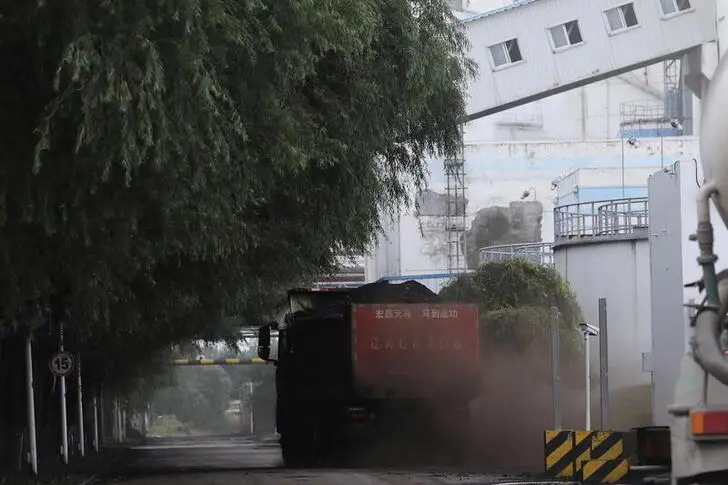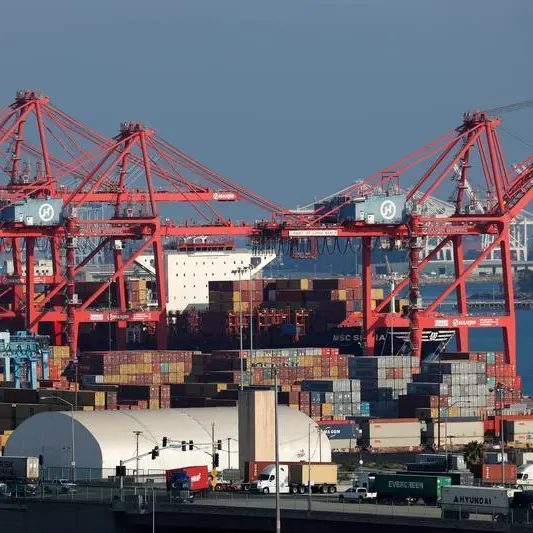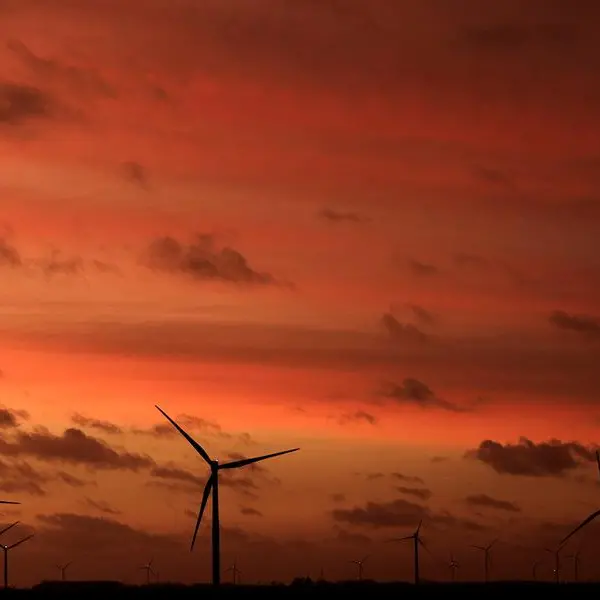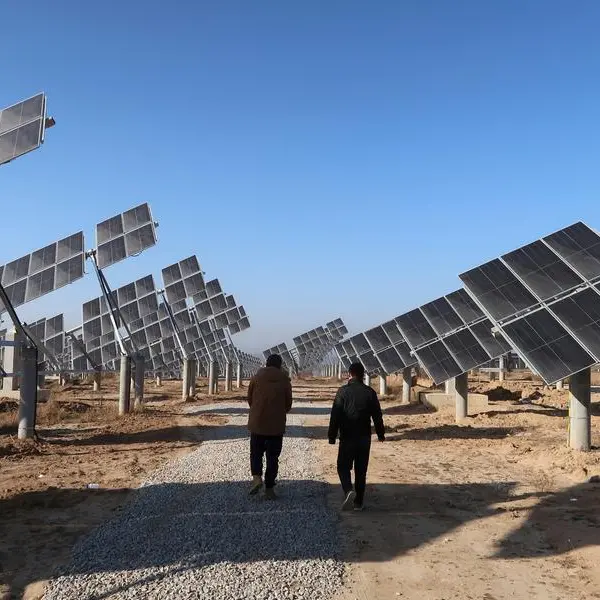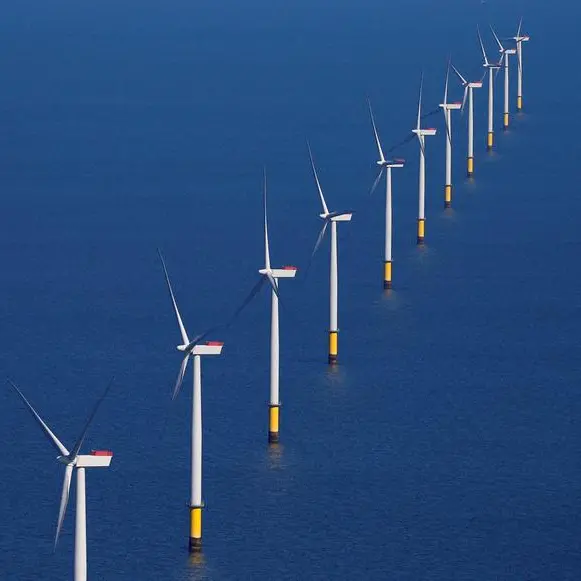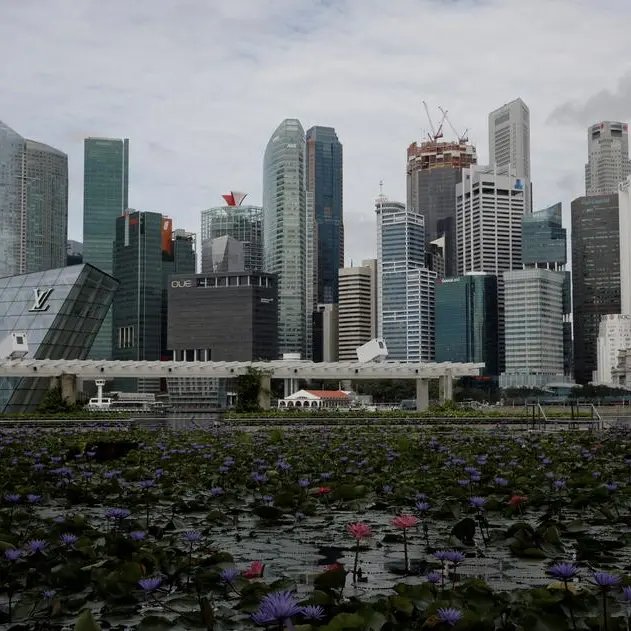PHOTO
(The opinions expressed here are those of the author, a columnist for Reuters.)
LITTLETON, Colorado - China's power demand this winter may increase by over 12% from last year's peak as the economy continues to recover from a construction-led slump, a National Energy Administration official said this week.
Following a slew of stimulus measures, industrial output and retail sales rose by more than expected last quarter, raising hopes that the world's largest manufacturer and exporter may be over the worst effects of a prolonged property crisis.
Factory activity unexpectedly returned to contraction in October, but analysts anticipate additional stimulus measures to allow the economy to reach Beijing's annual growth target of around 5% for 2023 as a whole.
However, due to the scale of China's sprawling and critical construction sector, the country's economic recovery is lopsided, with some property-related segments still contracting even as growth emerges in manufacturing and elsewhere.
The uneven nature of economic activity in turn makes it a challenge to assess the likely toll on emissions in the world's largest polluter.
POWERING UP
Power sector emissions in China already climbed to new highs over the first nine months of 2023, rising 6.1% from the same period in 2022 on increased coal generation, according to think tank Ember.
If factories crank up output of cars, clothes, electronics and other goods in line with rising demand, their collective emissions will likely climb in tandem.
The actual extent of any climb in manufacturing output will depend in large part on production margins and the expected market for each particular good.
Output data on cement and crude steel, both closely linked to the construction sector, have slumped heavily in 2023 due to the property sector freeze.
But output of passenger cars, refined crude oil, ethylene and lithium batteries have all climbed in recent months, suggesting that Beijing's stimulus efforts are gaining traction in some areas and stimulating purchases.
If that purchase momentum gathers pace, utilities will need to lift power generation to cater to the higher energy demand from factories.
And as many of China's production lines are electrified, much of that greater electricity generation may have a high carbon footprint, as more than 60% of China's electricity is generated from coal.
Further, any rise in production-driven emissions may be amplified by greater demand for heating in November and December, when temperatures across northern China tend to hit their lowest for the year.
Indeed, the combination of higher factory output alongside the seasonal climb in heating demand could push China's power emissions sharply higher heading into 2024, despite ongoing efforts to continue boosting clean energy capacity.
RIPPLE EFFECT
In addition to retail sales and factory output data, statistics on China's air travel volumes also offer a gauge on broader economic activity and emissions potential.
Domestic air travel numbers in China have gyrated wildly ever since the earliest outbreaks of COVID-19 in 2020 forced Beijing to restrict people movement in February of that year.
Airline traffic numbers increased sharply in 2021, but plunged again in 2022 as Beijing battled fresh COVID outbreaks and introduced new lockdowns.
So far in 2023, despite the economic worries from the property market meltdown, domestic travel volumes have surged, and scaled new highs in the most recent data releases.
International flight traffic has also climbed sharply, but remains well below the previous peak set in 2019.
If China's consumer spending continues to climb over the coming months - potentially boosted by greater factory activity and improved economic sentiment - then further climbs in both domestic and international travel numbers can be expected.
In turn, greater emissions from both the airlines themselves as well as from China's world-leading refining sector can also be expected.
China's refining giants can also be expected to lift output of plastics and other key industrial ingredients as downstream demand from manufacturers picks up.
And the demand from factories does not need to be solely driven by domestic orders, as many of China's largest manufacturers have major international markets.
The latest data on Chinese exports of electric vehicles, batteries, solar cells and LCD TVs all show strong gains in recent months, while shipments of furniture, toys and plastic products are also pushing higher.
The pace of some of those exports may slow over the near term if China's domestic demand improves and helps tighten producer inventories.
But over the longer run, any sustained increase in China's manufacturing output of most goods will lead to greater volumes being available for international markets.
Some of those end markets are going through their own consumer soft patch due to high goods prices and interest rates.
But if greater output in China helps to depress goods prices, then international consumer demand can be expected to recover, which may further boost China's economic recovery, as well as the emissions that go with it.
(Reporting by Gavin Maguire; Editing by Kim Coghill)
